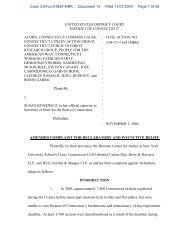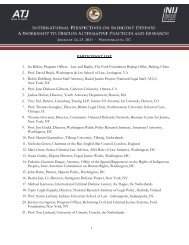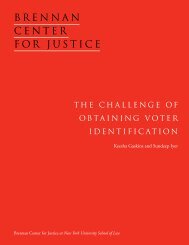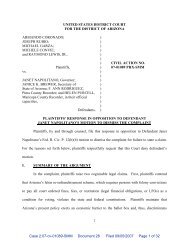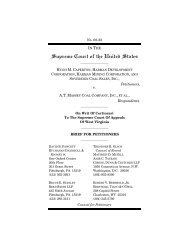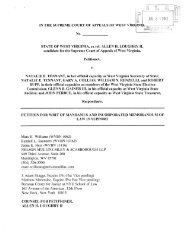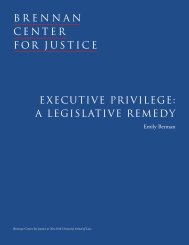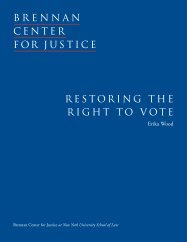THE NEW YORK STATE LEGISLATIVE PROCESS: AN ...
THE NEW YORK STATE LEGISLATIVE PROCESS: AN ...
THE NEW YORK STATE LEGISLATIVE PROCESS: AN ...
You also want an ePaper? Increase the reach of your titles
YUMPU automatically turns print PDFs into web optimized ePapers that Google loves.
46 <strong>THE</strong> <strong>NEW</strong> <strong>YORK</strong> <strong>STATE</strong> <strong>LEGISLATIVE</strong> <strong>PROCESS</strong>: <strong>AN</strong> EVALUATION <strong>AN</strong>D BLUEPRINT FOR REFORM<br />
must be reformed if the people of New York are to obtain the legislative<br />
representation they deserve.<br />
■■ LEGISLATORS UNABLE TO LEGISLATE<br />
This report documents a remarkably consistent and unique pattern of barriers to<br />
most legislators’ involvement in the legislative process in Albany. With the exception<br />
of introducing bills, every step in that process is marked by a lack of input,<br />
debate, and deliberation devoted to crafting legislative solutions to New York’s<br />
problems. In this way, legislators are prevented from fulfilling their chief function,<br />
namely representing the people in producing and passing legislation. The voters<br />
are deprived of the representativeness that modern legislatures must, and in most<br />
cases do, provide.<br />
■ INEFFECTIVE GOVERNMENT WITHOUT<br />
DELIBERATIVENESS<br />
The current legislative process also deprives New Yorkers of an effective<br />
Legislature that produces laws of the highest quality that reflect a public<br />
consensus. Both chambers lack the committee infrastructure that could serve as<br />
an engine for and refinery of innovative policy solutions – a necessity in a state<br />
facing numerous and complex challenges. The legislative process features several<br />
specific procedures that preclude the review of legislation that is necessary to<br />
improve bills, to ensure that they embody public consensus, and to prevent errors.<br />
By placing the sole burden of negotiating and finalizing legislation upon two<br />
legislative leaders rather than on an institutional mechanism such as conference<br />
committees, the current process also ensures that the final product, if there is one,<br />
does not have the benefit of either open debate or the policy expertise of all of<br />
the legislators. The result of these barriers to deliberativeness is not simply gridlock,<br />
but also legislation that is at times substantively flawed.<br />
■■ COMMITTEES: <strong>AN</strong> UNTAPPED RESOURCE<br />
In Congress and in many state legislatures, standing committees act as semiindependent<br />
incubators for policy and legislation. The committee chairpersons<br />
are allowed and even encouraged to develop legislation independently, to fertilize<br />
and refine bills through committee hearings and mark-up sessions, and ultimately<br />
to improve final bills through reconciliation with other committees and other<br />
chambers. Along the way, legislators and committee staff openly debate the<br />
wisdom and pitfalls of different approaches to policy problems, and then choose<br />
an approach in final legislation that reflects such a consensus. After companion<br />
bills pass each chamber, moreover, a conference committee further debates these<br />
issues and marks up the bills to produce a single compromise that better reflects<br />
the consensus of the two chambers.<br />
In New York State, however, the most significant policy development and legisla-



